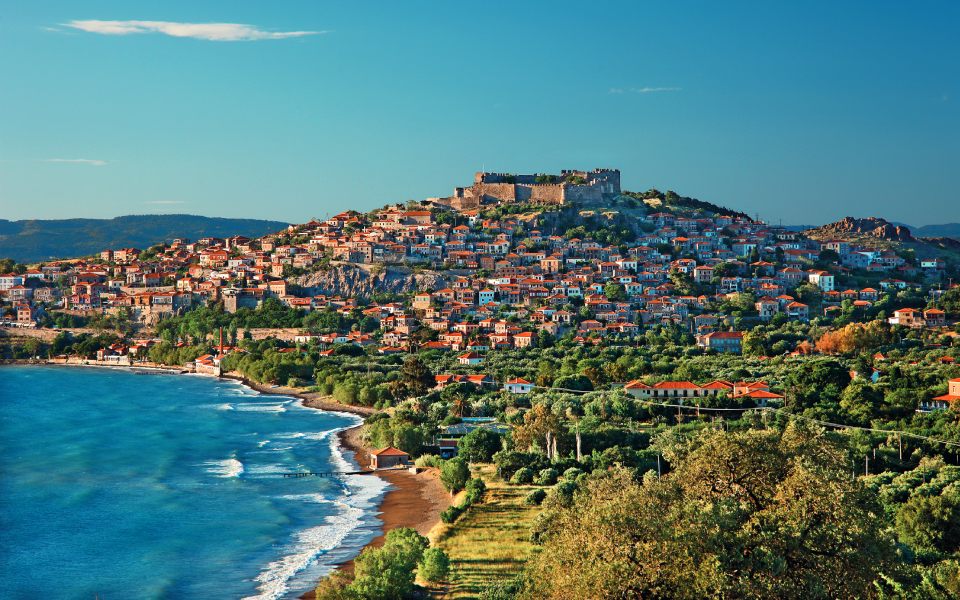I remember the first summer we began swimming at Chrousos Beach.
We would set off from Mesotopos, my village; our car back then was an old Opel station wagon, and it struggled on the ups and downs of a dirt road that seemed more likely to be taking us to some mountain monastery rather than to the sea.
A giant eucalyptus tree by the side of the road at the end of – yet another – bumpy downhill stretch was the signal that we were nearly there.
We would park and then walk, down a path past fig trees, reeds and ferns, until we reached the sandy beach.
It was a beach with endless sand, where, as the old-timers might put it, “You couldn’t find a stone to crack open a nut.”
Or even one pebble to hold down your towel so the wind wouldn’t take it away.
Not that we cared: the only thing we wanted to do was to run barefoot in the sand and dive into the water – the last one in a rotten egg.
At the time, Chrousos was the ultimate sanctuary, a great haven of serenity for faithful worshipers of the sea.
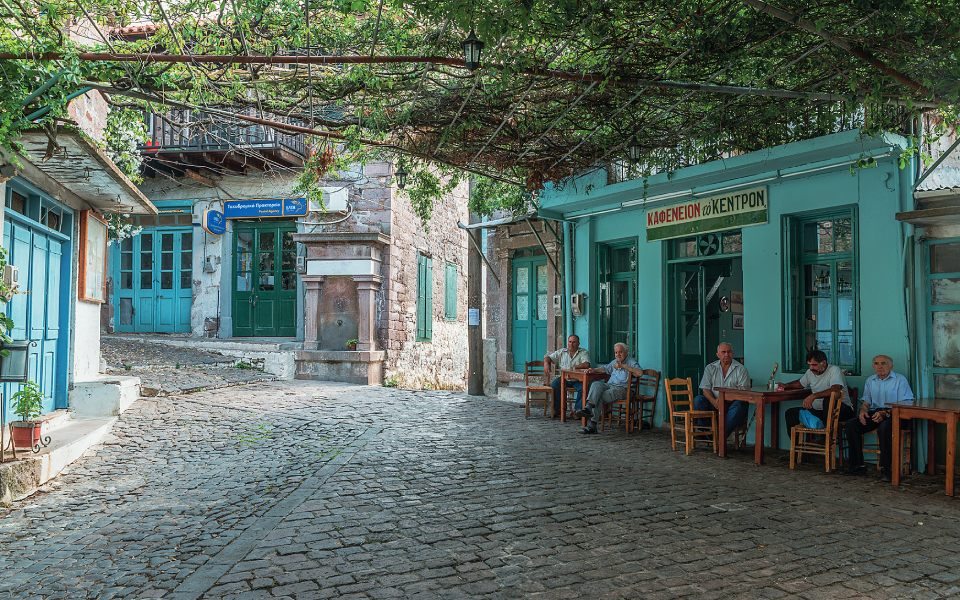
© Perikles Merakos
More than thirty years have gone by since then, but, as hard as it is to believe, Chrousos Beach has remained nearly unchanged.
A few years back, the Maliontas River overflowed its banks. I was afraid that the floodwaters might have washed away the beach, but they didn’t.
The only thing that was swept away was the path with the reeds. Other than that, all is good.
Yes, more people come to the beach these days, but, as much as we might want to keep it a secret, there will always be space for everyone in heaven.
The same food truck is still there, on the eastern end. Another snack bar opened on the other end of the beach. That’s the extent of the “improvements”.
The dirt road remains unpaved, to remind us that, in life, you have to make at least some effort to get the best things.
For me, Chrousos is right there in my top three beaches on Lesvos, alongside Skala Eresou, with its irresistible stretches of sand, and Aghios Isidoros in Plomari.
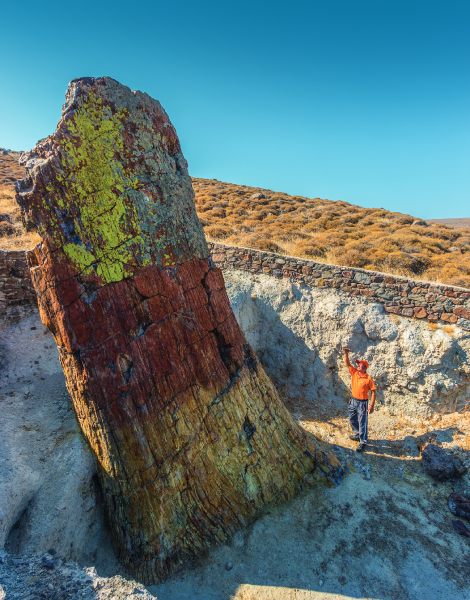
© Visualhellas.gr
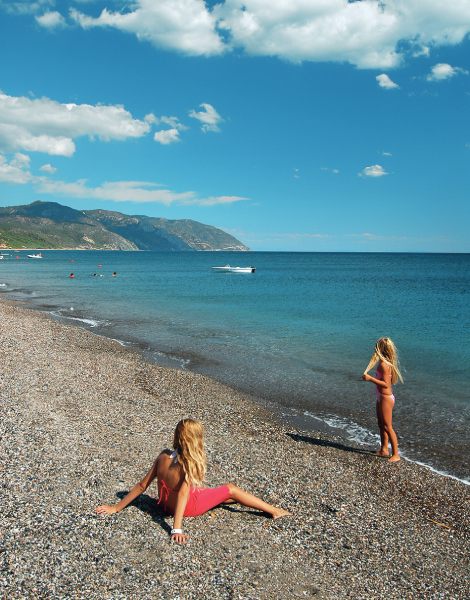
© Giannis Giannelos
Writing the word “effort” brings to mind the month of August, the best season for sardines on our island, when you see fishermen not just making an effort but waging battle with their heavy seine nets out in Kalloni Bay.
They go out before sunrise on their fishing caiques to catch netloads of this approximately 11cm-long surface feeder while the whole island waits impatiently.
Morning fishing in Kalloni Bay is a truly mystical rite, and you’ll count your blessings if, when the fishermen get back to the port of Skala, you’re lucky enough to get some fresh papalina, as we call the local sardine variety in Lesvos.
Every taverna worth its name on the island serves them, and grills them as you choose, with oil or with garlic.
In Mytilene, we prefer them prepared quite differently: wrapped in greaseproof paper, with two or three layers of coarse salt from the salt marshes in Kalloni, and then left to soak for a few hours in water and oil.
When they’re ready, you gently pick the sardine up and open it in half from the bottom to the top and that’s it: the ultimate delicacy is ready, and there’s nothing more it needs.
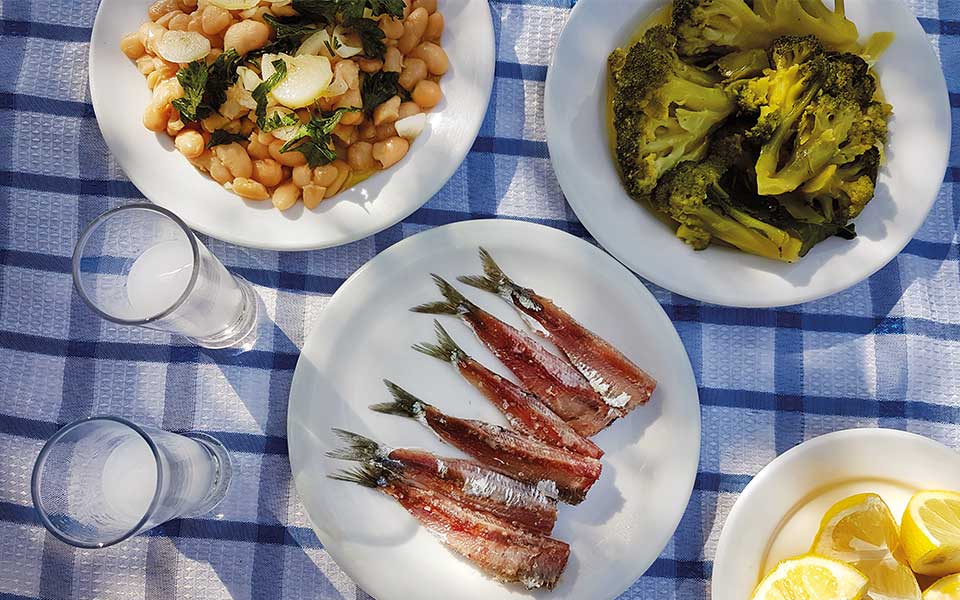
© Achileas Kiachagias
Did I say nothing? That’s not entirely true. Papalina without ouzo is like a cone without ice cream.
Sardines require the best kind of ouzo, which is ouzo from Plomari, along with good company, straight talk and the sound of the sea.
The rule to remember with ouzo is: “Water, yes, but no ice.” It’s not whiskey, you don’t drink it on the rocks, and, most importantly of all, you don’t drink it alone or without something to nibble on.
Sitting somewhere with a view is important, too.
Nothing can steal the show from the views at Molyvos, the most beautiful place on Lesvos, a traditional settlement where, by law, all houses must be built of stone and wood.
You’ll never get enough of strolling its narrow alleys, or watching the sunset from the cobbled pathway that leads down to the port.
Believe me, it’s a real “high-definition” sight.
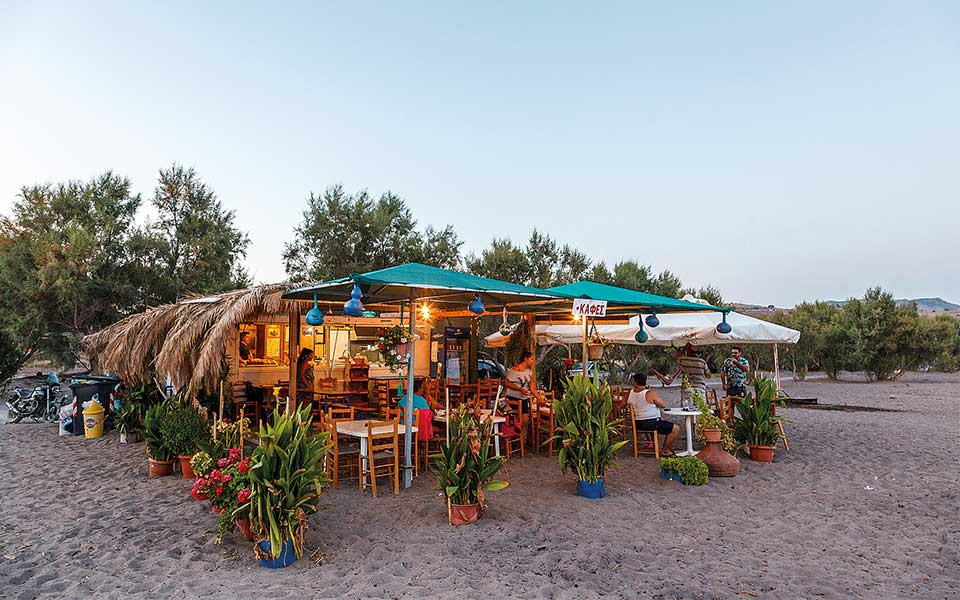
© Giannis Mantas
You’ll need a car when you come to Lesvos.
The distances are long, and the road from Mytilene to Kalloni may be comfortable – meaning that it’s wide – but the rest of the road network consists of country lanes, which are generally fine but often extremely narrow and require that the driver remain focused.
What’s more, you’ll need to drive a lot: to Mytilene, the island’s capital with its mansions, large castle and museums; to Mantamado’s Monastery of the Taxiarches and its koumaradika, or pottery workshops; and to Varia, for the small but engaging museum dedicated to the folk painter Theophilos.
Next to it you’ll find the bigger, and surprisingly rich, Teriade Museum.
You should certainly go to Agiasos, the most beautiful mountain village on the island, and to Vatera, for a swim at its king-sized beach.
You might even opt to go on a pilgrimage to the Panaghia of Petra, or to Aghios Rafail in Thermi, or to faraway Sigri, with its famed Petrified Forest, which is worth every kilometer of the long drive to get there.
You should also visit the small village of Fterounta and see the unusual local stone from which most of its houses have been made, and mountainous Chidira, for some good wine and a stop at Greece’s first digital art museum, dedicated to Georgios Jakobides’ work.
Don’t forget to visit Skala Sykamias for a glass of ouzo under the mulberry tree, or to head to Aghia Paraskevi for the Museum of Olive Oil Production of Lesvos.
As for my dear Skala Eresou, a visit there will let you take in all the positive vibes you’ll need for next winter.

